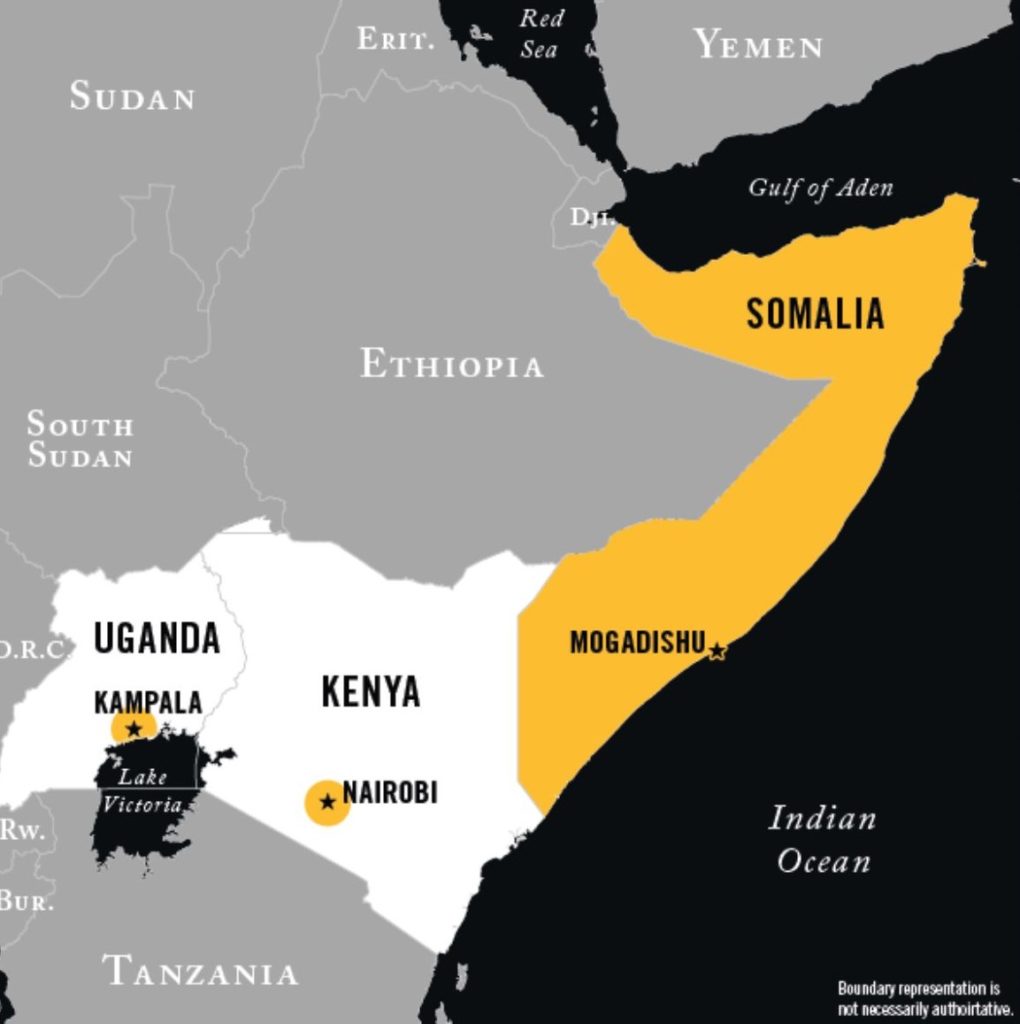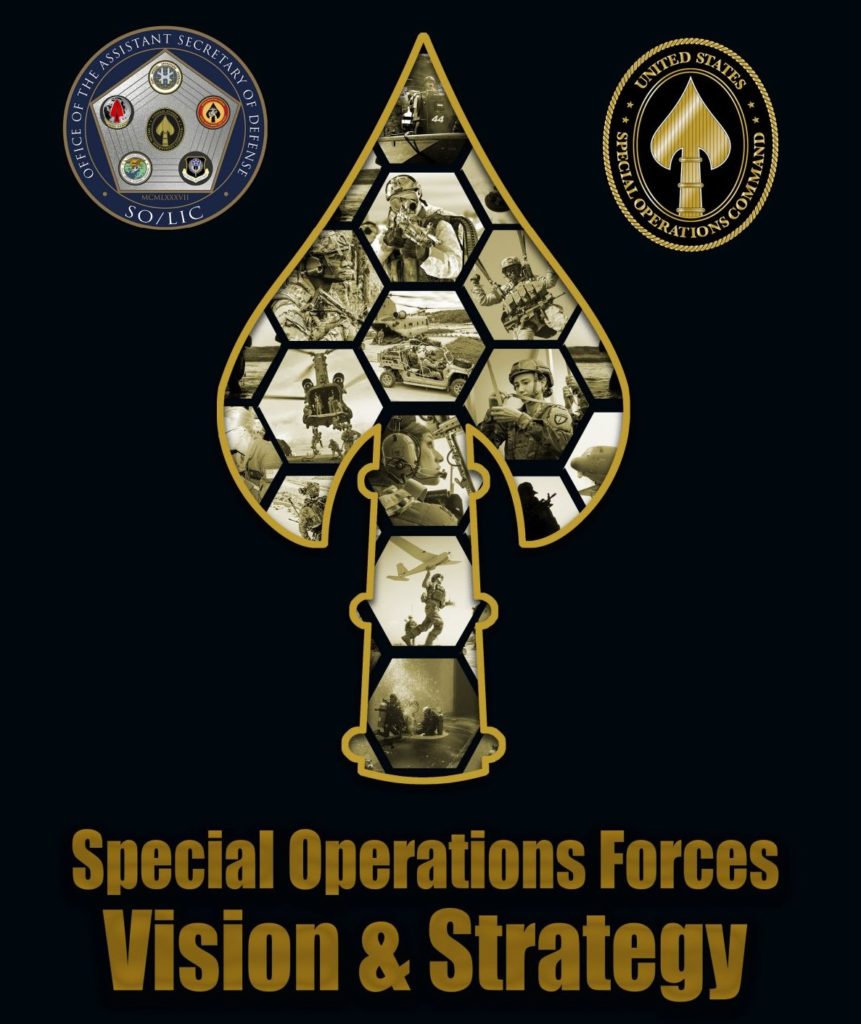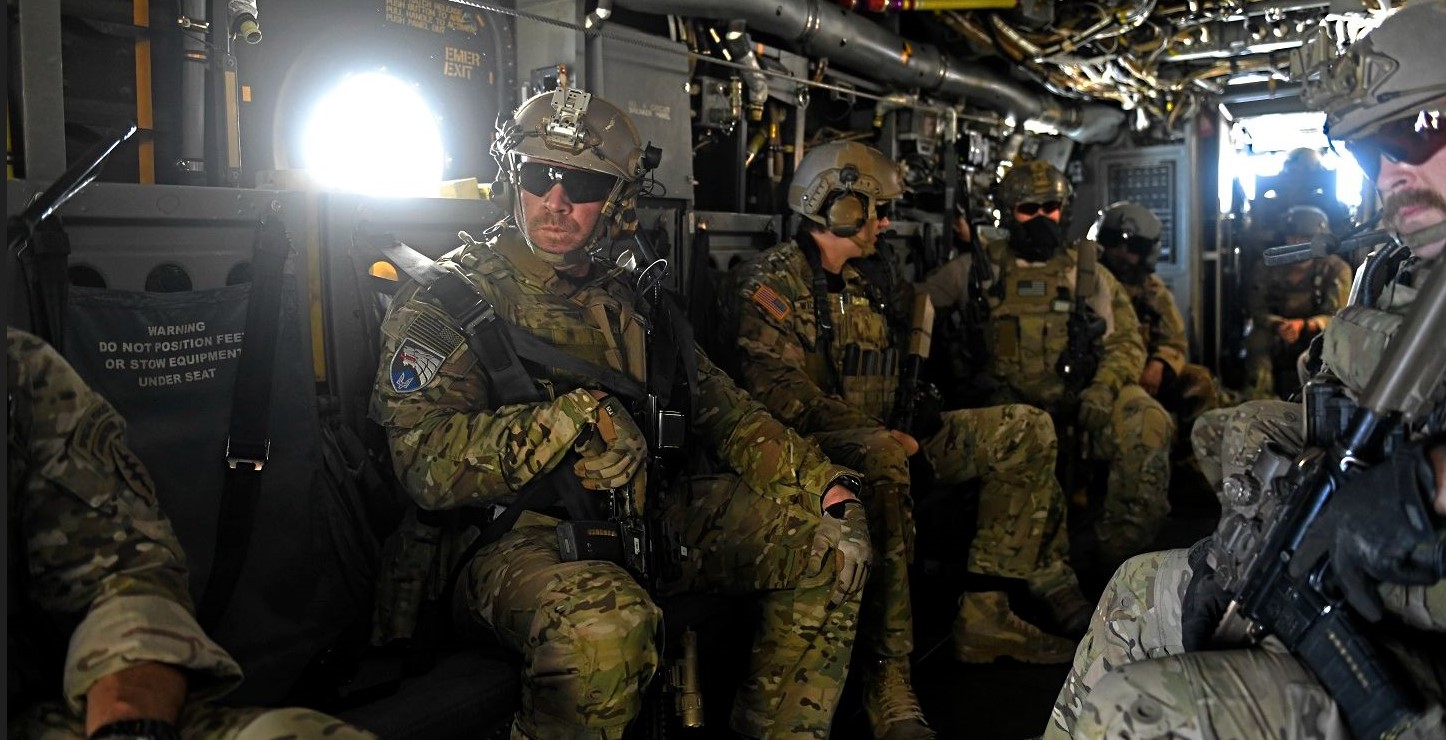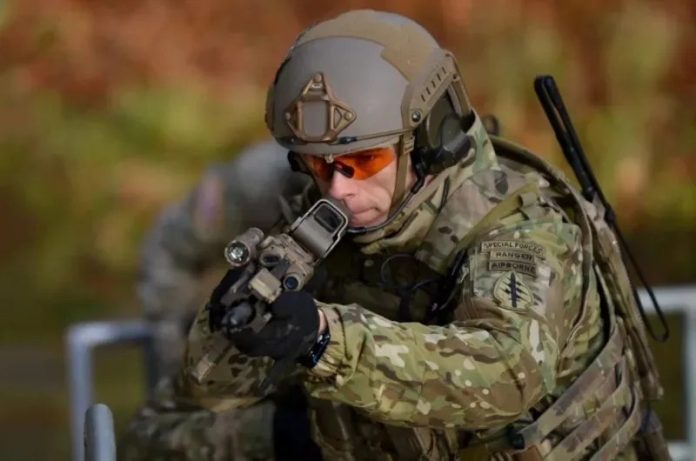Current National Defense Strategy
Back in April 2022, General Richard Clark, commander of US Special Operations Command (SOCOM), and Christopher Maier, Assistant Secretary of Defense for Special Operations and Low-Intensity Conflict, announced the release of a sixteen-page document outlining the “Vision and Strategy” of US Special Operations Forces (SOF). This came on the heels of the Department of Defense (DOD) release of the 2022 National Defense Strategy (NDS); a factsheet outlining the highlights can be found here.
To fully understand the role SOF plays in national defense, we must first understand the broader picture of the National Defense Strategy. According to the factsheet, the US has four defense priorities, these are:
- Defending the homeland, paced to the growing multi-domain threat posed by the PRC (People’s Republic of China)
- Deterring strategic attacks against the United States, allies, and partners
- Deterring aggression while being prepared to prevail in conflict when necessary, prioritizing the PRC challenge in the Indo-Pacific, then the Russia challenge in Europe.
- Building a resident Joint Force and defense ecosystem.
Take note that counterterrorism activities are no longer listed as a top defense priority. As a matter of fact, the word “terrorism” does not appear once on the non-classified NDS fact sheet.
The document continues:
“The Department will act urgently to sustain and strengthen deterrence, with the People’s Republic of China (PRC) as our most consequential strategic competitor and the pacing challenge for the Department.”
They keep spelling it out for us; China is our biggest threat. That is something we must keep in mind and not get too bogged down with involvement in the war in Ukraine. It’s a primary tenet of special operations training; never take your eyes off the bad guy.
Russia is mentioned next:
“Russia poses acute threats, as illustrated by its brutal and unprovoked invasion of Ukraine. We will collaborate with our NATO Allies and partners to reinforce robust deterrence in the face of Russian aggression.”
This further puts matters into perspective. Russia is the number two bad guy. So we need to keep a close eye on them, but the PRC is our number one concern.
Tertiary threats are addressed:
“The Department will remain capable of managing other persistent threats, including those from NorthKorea, Iran, and violent extremist organizations.”
These are the “also-rans.” Important to keep an eye on, but not the main focus at this time. That said, in the special operations community, focus can shift instantly, and we must be prepared to address any threat anytime, anywhere. I misled you earlier; while it is true that the word “terrorism” does not appear in the NDS fact sheet, it does mention “violent extremist organizations” as a persistent threat. If you want to learn more about what the National Counterterrorism Center (NCTC) has to say about violent extremism, click here for access to the 2021 edition of US Violent Extremist Mobilization Indicators. It’s your tax dollars at work.
If you want to track the activities of current terrorist groups, click here and check out the Counter Terrorism Guide webpage maintained by the Office of the Director of National Intelligence. As you’ll quickly see, terrorism is still alive and well worldwide. However, it steals a line from Tom Clancy; it does not present the same “clear and present danger” to our nation as it once did.

The Future of SOF

Starting with the attacks of 9/11 over two decades ago, US special operations forces have concentrated primarily on counterterrorism efforts. While this mission remains on their radar, the focus of the national defense of the United States has shifted to keeping tabs on the activities of the People’s Republic of China and, to a lesser extent, Russia. As a result, operators who may have spent their entire careers fighting the war on terror may wonder how they fit in.
Assistant Secretary Maier spoke at the National Defense Industrial Association Special Operations/Low-Intensity Conflict Symposium last Friday, November 18th. Speaking of the future of SOF, he said,
“Where I think there is going to be tremendous transition and change — and I would say we’re already along that path — is really applying the capabilities and the thinking — and in many respects the talent that is unique to SOF — to the rest of the National Defense Strategy challenges.”
I read that and thought, “Ok, great. The only constant in change, but how are we going to change?”
Fortunately, Mr. Maeir addressed that issue a bit. He continued,
“There’s not a lot of institutional knowledge that goes back, frankly, to the pre-2001 era,” Maier said. “So there’s a significant amount of … education but also advocacy required in these conversations, in some cases just to get a seat at the table. And then being able to apply in those conversations … whether it’s planning or policy discussions the role SOF can play and where there’s key roles SOF can help to provide options for senior decision makers.”
Here, he is being quite frank and realistic. Times have changed, areas of interest have changed, and SOF has to change along with it. If not, they might not get what he calls “a seat at the table.” So they need to define their role in a changing global environment. And that is what the Special Operations Forces Vision and Strategy document does.
I’ll cover the document’s highlights in an attempt to bring you up to speed on the future of American SOF in 2022 and beyond.
Who We Are
If I had to sum it up in three words, I’d say that SOF is an innovative problem solver. These extraordinarily dedicated and talented individuals devote their lives to taking on the most complex of challenges. The more challenging, the better. As the SEALs say, “The only easy day was yesterday.” SOF is a community, and you don’t have to wear a tab or a trident to be part of that community. There are several other SOF professionals for every operator: military support personnel, contractors, DOD civilians, and family members pulling together to ensure operational readiness. It takes a village and a fairly big one at that.
What We Do
The document explains that SOF “respond swiftly to crises worldwide and accomplish high-risk, politically-sensitive missions with a low signature and small footprint.” In addition, they “cultivate strong relationships with our global network -allies, partners, joint, interagency, multinational, industry, and academia.” Like it or not, SOF troops are ambassadors for the US and the rest of our armed forces. They are widely looked up to and emulated.
I love the next bullet point in the document. Part of it reads that SOF “…create dilemmas for our adversaries”. Classic. If the Rangers, SEALs, or Delta are coming for you, it will not be your best day.
Where We Are Going
SOF remains balanced and ready to take on any conflict asked of them. The vision and strategy document mentions that they will utilize “sustainable counterterrorism to safeguard the Nation.” While for the rest of the foreseeable future, this will be part of their mission, even if it doesn’t align neatly with the main objectives of the National Defense Strategy. Asymmetric warfare is a big part of what SOF does, and they are damn good at it. Small units will always be needed to go in the middle of the night to places with names you can’t pronounce to fix problems you didn’t know existed. That’s just the nature of the beast.
SOCOM, however, realizes that the force must evolve. “Evolve into what?” you may ask. According to them, “current and future threats demand SOF evolves into a force capable of creating strategic, asymmetric advantages for the nation as a key contributor of integrated deterrence.”

Integrated Deterrence
In a piece published online by the US Army War College, Scott Harr discusses integrated deterrence, which he calls a “new concept.” He quotes Colin Kahl, Undersecretary of Defense for Policy, in his attempts to define the phrase. Mr. Kahl says, “In terms of integrated … we mean, integrated across domains, so conventional, nuclear, cyber, space, informational. [It is also] integrated across theaters of competition and potential conflict [and] integrated across the spectrum of conflict from high-intensity warfare to the gray zone.”
Ok, I think I understand. In broad terms, this is SOF being involved and non-compartmentalized.
Jim Garamone quotes Kahl in a 2021 piece he wrote for the DOD news. He notes, “The concept in this case also means integration of all instruments of national power.” Those instruments are government and military. He quotes Kahl as saying, “Most importantly, it means being “integrated across our allies and partners, which are the real asymmetric advantage that the United States has over any other competitor or potential adversary.”
We’re starting to dig deep down the rabbit hole on this one, but that is necessary to understand the vision and future strategy of SOCOM for SOF. For example, you might wonder what Kahl means by “asymmetric advantage.” The best definition of the term I could find is from a company aptly named Asymmetry Observations.
They tell us,
“Asymmetric advantage is based on knowing something that creates value or has an edge that others don’t. An asymmetric advantage is protected and maintained through the distinctions between knowledge of a concept vs. actually being able to do it.”
We know or gain knowledge of the true capabilities of our adversaries that gives us the edge over them. While knowledge is power, it isn’t necessarily deterrence. Garamone reminds us that deterrence “has been at the heart of US policy since the Cold War.” I would argue that the idea of American deterrence goes back to Teddy Roosevelt’s “speak softly and carry a big stick” philosophy of foreign policy.
Kahl tells us that the traditional definition of deterrence does not necessarily hold today. He says, “We need to think about deterrence differently given the existing security environment and the potential scenarios for conflict that we’re trying to deter. We at [the] Department of Defense need to have the capabilities and the concepts to deny the type of rapid fait accompli scenarios that we know potential adversaries are contemplating, so they can’t make a rapid lunge at our partners and allies before they believe the United States can show up.”
Prevention. He’s talking about using SOF as a prophylactic force rather than just a reactive force. Being given actionable intelligence and acting on that to deter what is euphemistically called “negative outcomes.” Sure we already do that to some extent, and those missions almost always remain classified. We don’t want to alarm the American people with “what could have happened,” At the same time, we don’t want to encourage bad actors to develop destructive plans knowing it will gain them recognition.
Kahl ponders some more on the subject,
“We also have to make ourselves more resilient because, frankly, we know that our adversaries have developed theories of victory, cognizant that they wouldn’t do particularly well in a protracted conflict with the United States,” he said. “So they don’t intend to fight a protracted conflict. Instead, they intend to blind us and deafen us and slow us down.”
Twenty years we spent in Afghanistan. Two long, painful, bloody, expensive decades…and the Taliban knew we’d leave in the end, and they’d still be there. It reminds me of the Bruce Springsteen anti-war song, Born in the USA (and no, it is not a patriotic tune, read the lyrics and think about them). The singer says he “Had a brother at Khe Sahn, fighting off the Viet Cong. They’re still there; he’s all gone.” Meaning, of course, his brother (either biological or military) was killed in the fighting, yet the VC remained. So what was it all for? A lot of people ask that same question about Afghanistan…and Iraq.
There is much more to the SOCOM vision and strategy for the future of SOF in the United States military. Unfortunately, time, space, and attention span preclude addressing all of it here. However, it is quite a lot to digest. But a plan exists, and it seems like a good plan. Special operations forces, by their nature, have always been dynamic and adaptable. These qualities will keep them relevant and at the tip of the spear for years to come.
Read the full article here


